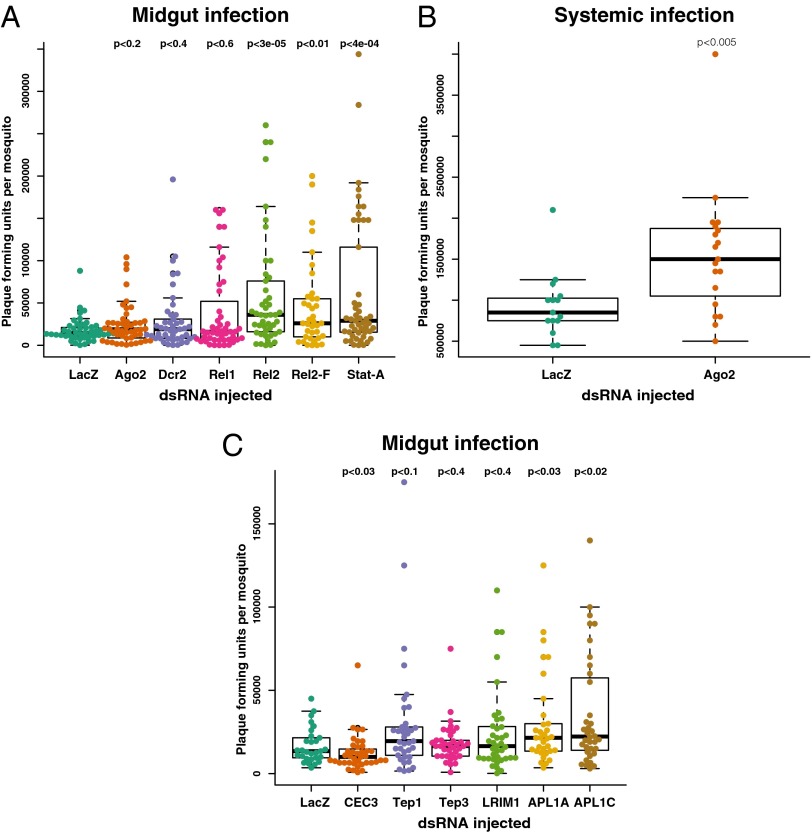Fig. 2.
Imd and JAK/STAT pathways are required for midgut protection against ONNV infection of An. gambiae after an infective blood meal. Panels of genes involved in immune function were assayed for influence upon ONNV infection (all mosquitoes that took blood are represented in the figures, with an infection prevalence of 100%). Genes were silenced by treatment with the dsRNA indicated on the x axis. Mosquitoes were challenged by blood-feeding with ONNV (A and C) or by injection with ONNV (B). Three days after infection, mosquitoes were individually assessed for viral titers by plaque assay. (A) Silencing of key intracellular immune signaling factors shows strong antiviral protection in the midgut mediated by the Imd pathway (Rel2) and JAK/STAT pathway (Stat-A). No detectable midgut protection is mediated by the siRNA pathway (Ago2, Dcr2) or the Toll pathway (Rel1). (B) As a positive control, the same reagents detect antiviral protection by the siRNA pathway (Ago2) against injected ONNV in the systemic hemocoel compartment. (C) Silencing of extracellular immune factors reveals an antiviral function for the LRR proteins APL1A and APL1C, and an absence of antiviral activity for Tep1, Tep3, and LRIM1, whereas loss of CEC3 function depressed the viral titer. LacZ, irrelevant control dsRNA targeting the E. coli lacZ gene encoding β-galactosidase.

